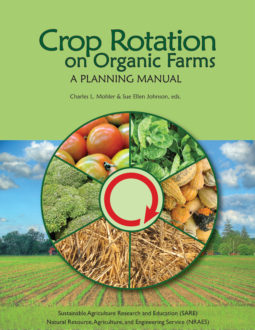Legumes like beans and alfalfa have nitrogen-fixing bacteria associated with their roots. Consequently they compete only slightly with nonlegumes for soil nitrogen and in some cases even supply nitrogen to adjacent plants via leakage and root decomposition (fine roots grow and die rapidly within the season, even in healthy plants).
For example, field pea can be grown with a small grain and the two crops combine-harvested together (119). Intercropping of beans and corn (usually with squash, as well) formed the basic farming system of Native Americans from Central America to the northeastern US. The scientific literature has documented the value of intercropping legumes with nonlegumes, especially grain crops, though much of this work has been done in the tropics (for example, see reference 126).
“Specialist pests have different ways of finding their host plants, and non-host plants disrupt some species more easily than others.”
Grass-legume combinations are often used for forage and for cover crops. Hairy vetch combined with a winter grain like rye, wheat, or spelt is a good combination for a fall-planted, overwintering cover crop. Oat and field pea planted in August in the northern US and southern Canada will produce substantial organic matter and will then winter-kill, allowing early tillage the following spring. Hay meadows and pastures are often planted with a mixture of grasses and legumes. In all of these cases, the legume provides nitrogen, while the grass produces the bulk of the organic matter. Some research indicates that a pound of clover will fix more nitrogen into plant-usable form when grown with grasses than when grown in a pure stand. In some cases this can result in as much nitrogen fixation by the mixture as by a pure stand, but with a greater yield of organic matter (44).
